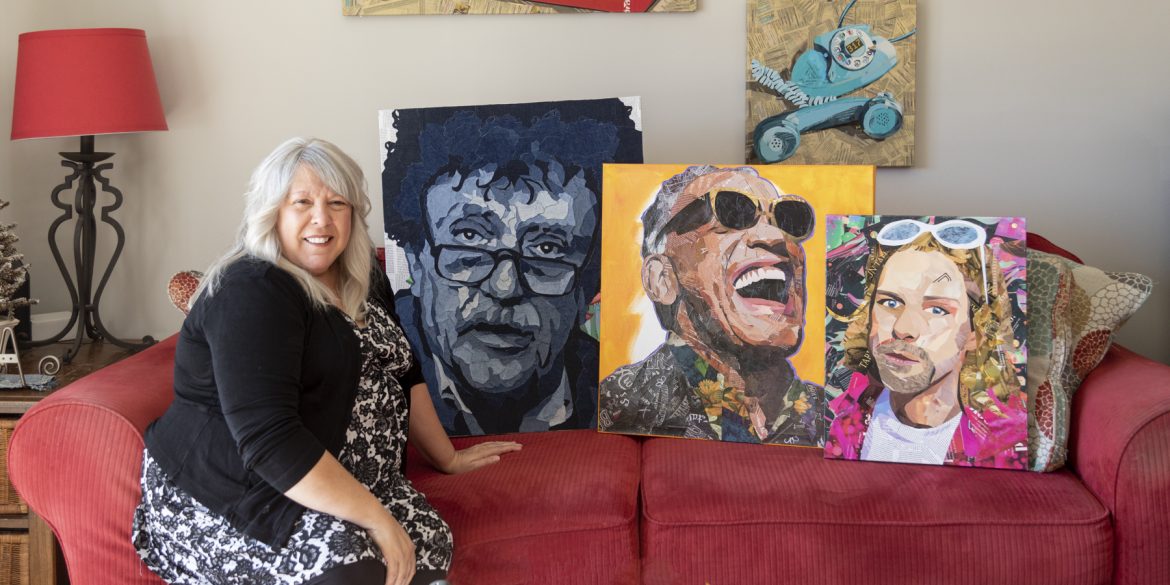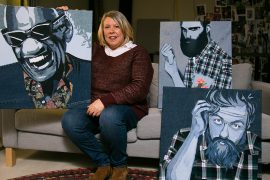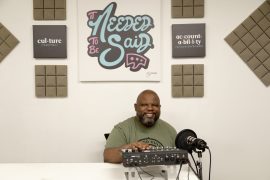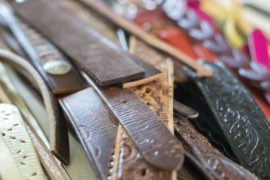Kathy Saucier has been an artist for decades, starting out painting and making murals across Indiana. In the last five years, Kathy’s art evolved into making collages out of magazines and scraps of denim. Her work is primarily made from recycled paper or recycled denim. PATTERN sat down with Kathy to learn more about her process for the beautiful art she creates!
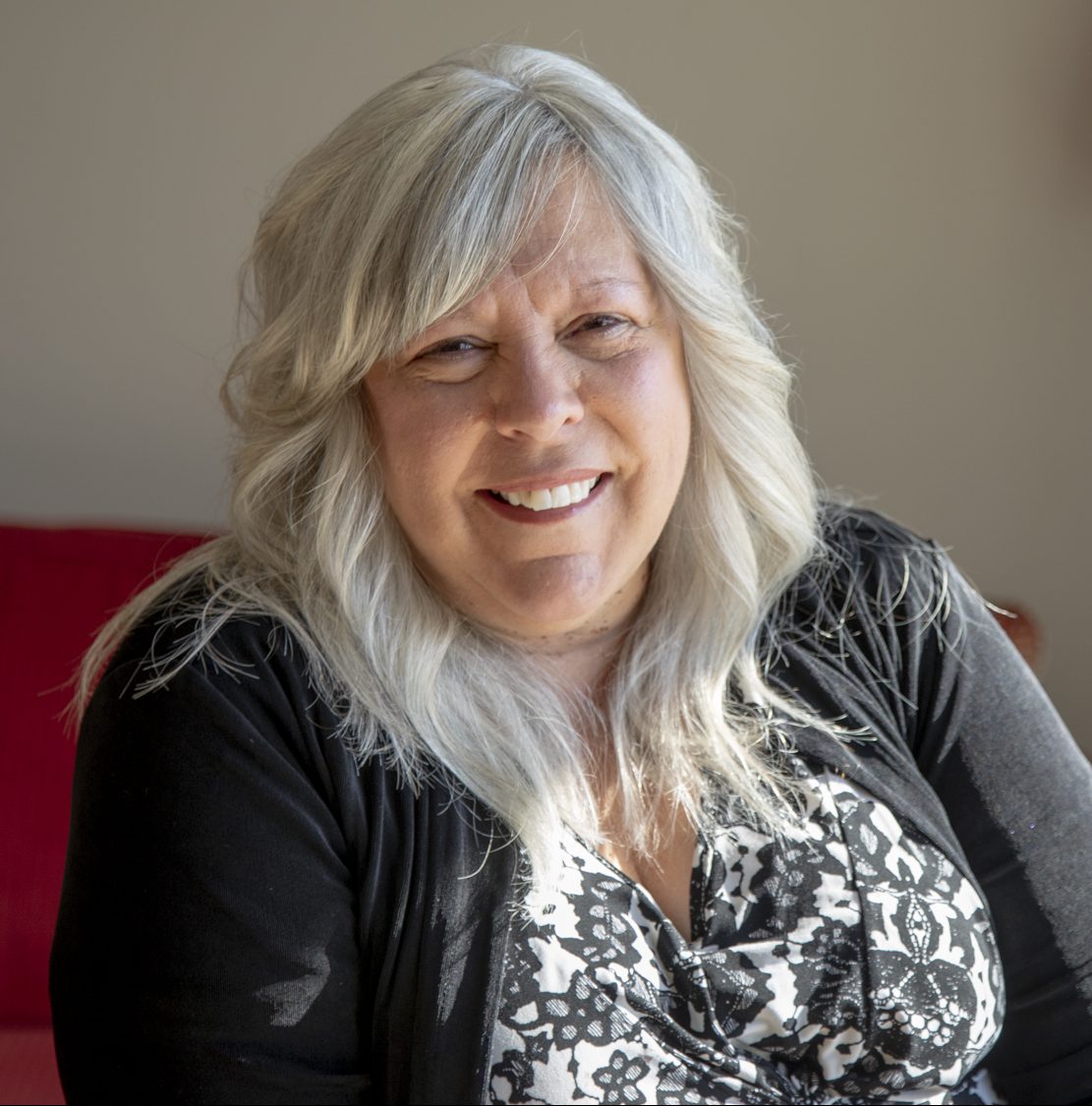
Name: Kathy Saucier
Business Name: Kathy Saucier Art
Instagram: @KathySaucier17
TikTok: @TheUpcycledArtist
Website: KathySaucierArt.com
What do you make?
I make art from recycled products and recycled materials. I like to use blue jeans and I like to use magazines. Any kind of recycled paper, actually.
How long have you been doing this?
I’ve been doing upcycled art for about five years. Prior to that, I painted murals at churches, senior centers, and schools.
Are there any retail locations where people can find your art?
Retro Metro
2943 E 46th Street, Indianapolis, IN, United States, Indiana
The Hampton Design Studio
5515 E. Washington St., Suite A, Indianapolis, IN 46219
3 Rusty Nails Shoppe
895 Conner St., Noblesville, IN 46060
Gold Leaf
1901 East 46th Street, Indianapolis, IN, United States, Indiana
What piqued your initial interest in designing your art?
I was upcycling clothing at the time, which is a form of collage to me. I’ve always loved the thought of putting different patterns together and mixing plaids and polka dots and all that. It morphed into making denim pieces with upcycled denim, and then it morphed right into color and working with different patterns, colors, and words out of magazines.
What principles do you use when designing?
I am not a method artist. I know there are a lot of artists out there that have their method where they do this first and then do that. I am not like that. My only method is I generally work from the back [of my art] and work my way forward. Especially with the denim collages, that’s my only rule. I don’t really have any fancy methods that I use. I’ve learned to let the universe take over.
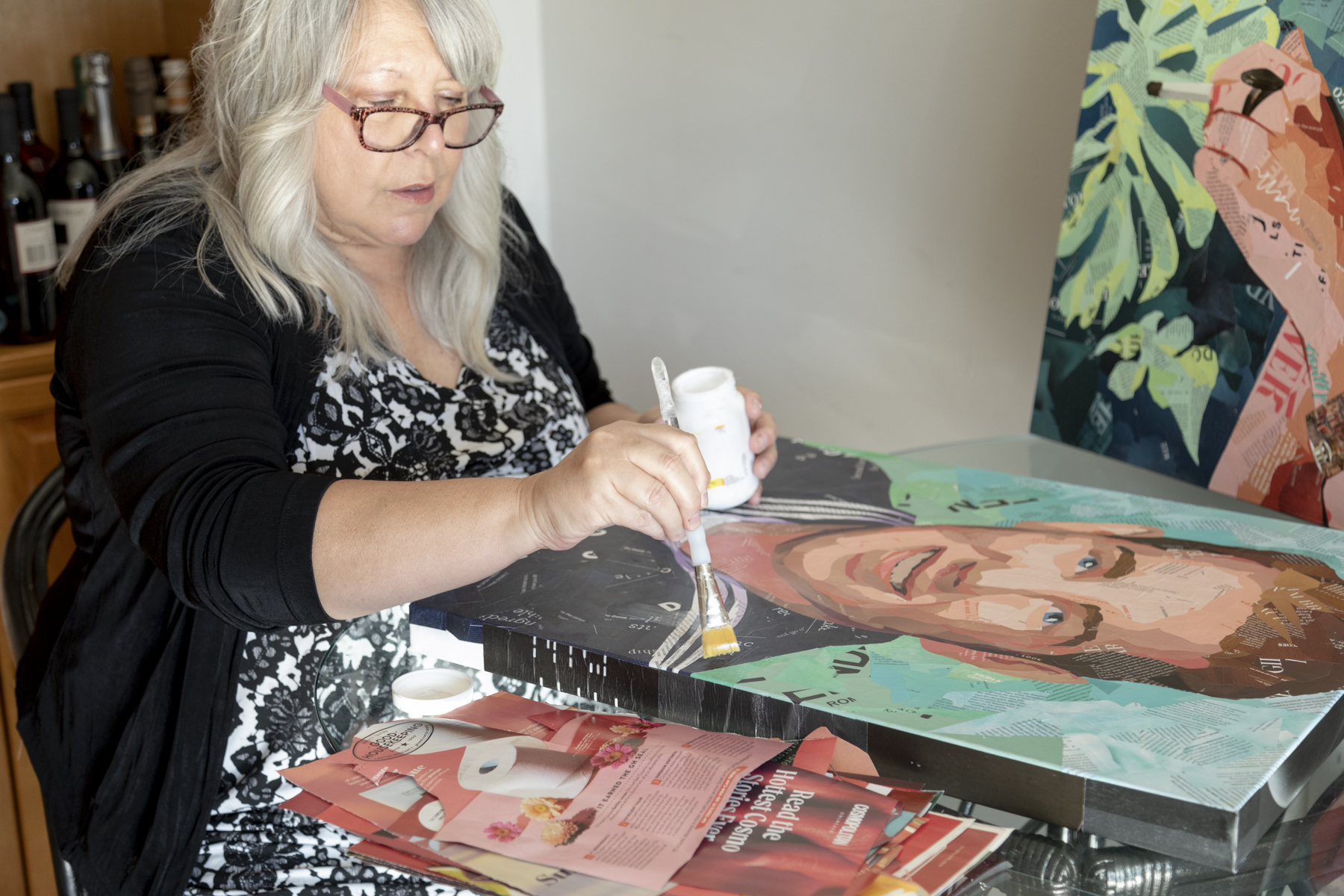
Who and/or what influences your design style?
I try not to let anybody influence my design style because I don’t want to copy anybody. There’s only one me. You have to put out what is authentically you.
How would you describe your design aesthetics and values?
I would call myself somewhat traditional. I want art that people know what it is, but has an artistic flair to it that’s different from just a portrait being painted on canvas. I like that you can recognize who the subject is because I primarily do portraits.
What comes first for you—the design materials or the design concept?
The concept—and I use that term loosely. I know I’m going to do a certain portrait, but as far as colors go, I don’t sit down and plan it. I just start with one aspect and let creativity take over.
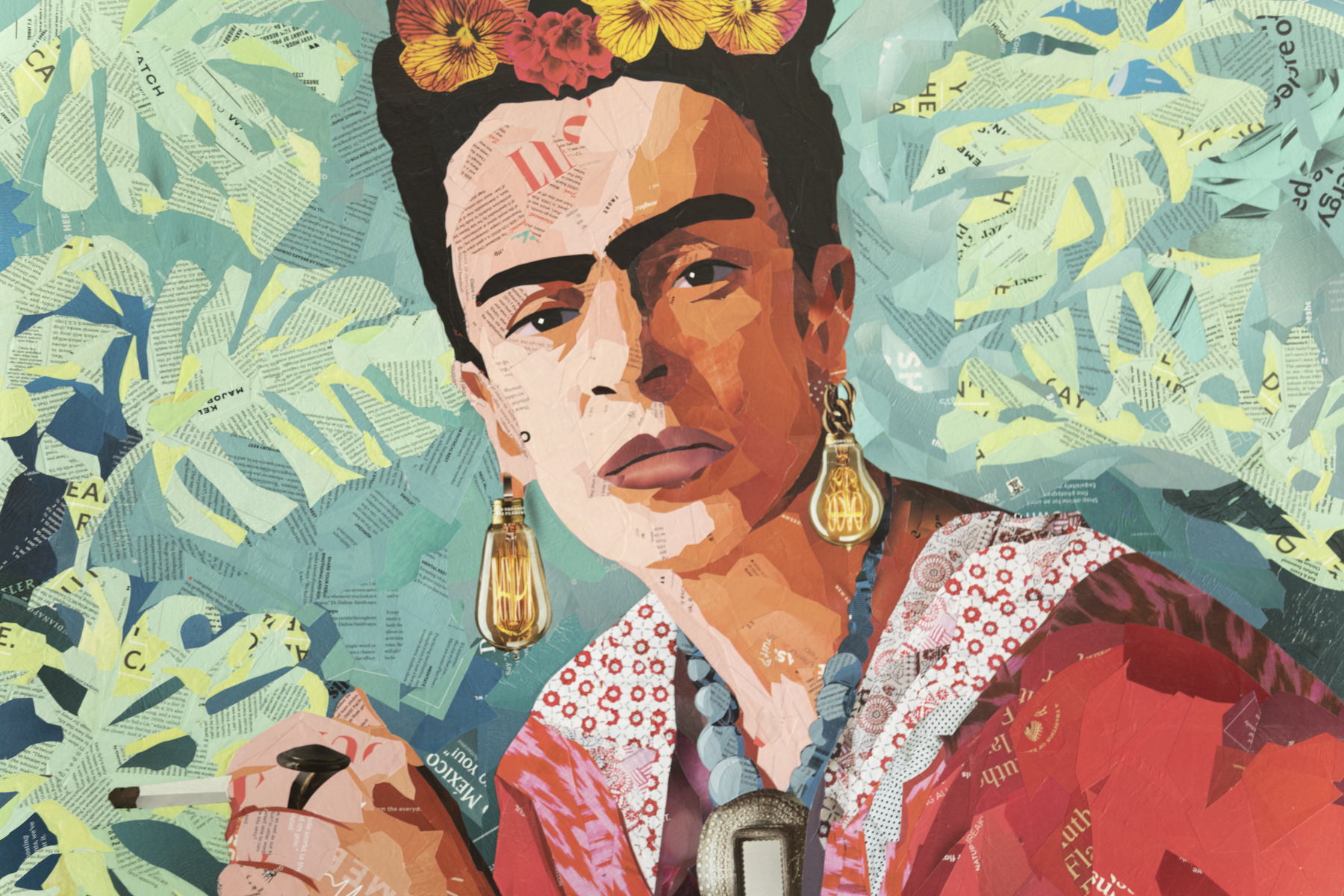
Could you describe the process of creating a piece, from conception to completion? With portraits, I sketch it out on the canvas and I usually start with skin tone. There’s several different skin tones—somebody’s either a pink or an orange or tan or an olive. I start from there.
With the denim collages, I usually use about six or seven different colors of blue jeans. I have a great community that donates tons of blue jeans to me, so I very seldom have to go out and buy blue jeans. I do the background first and then I work from dark to light.
What is your favorite tool and why?
I don’t have any fancy tools for my work. I use glue, I use a brush, and I use scissors.
Describe a piece you’ve created that you are most proud of. What was special about it?
People always ask me what my favorite piece is, and it will be the most recent one I completed. It’s always my favorite and then it wears off. One of my most favorite pieces is the red phone collage. It is one of the first pieces that I ever made and I will never part with it.
Describe the commissioning process. What are the best and worst aspects of doing commissions?
The worst aspect of commissions is that sometimes the photos people provide me are not what I would call artsy. They’re either not the right perspective or they’re not interesting. The best part of it is that when people hire me for a commission, they let me do what I need to do to make the piece complete. I’ve been really lucky and I’ve never had anybody not love it. Even though they may provide me with a photo that’s not the greatest, I can usually take that and work it into something that’s fabulous.
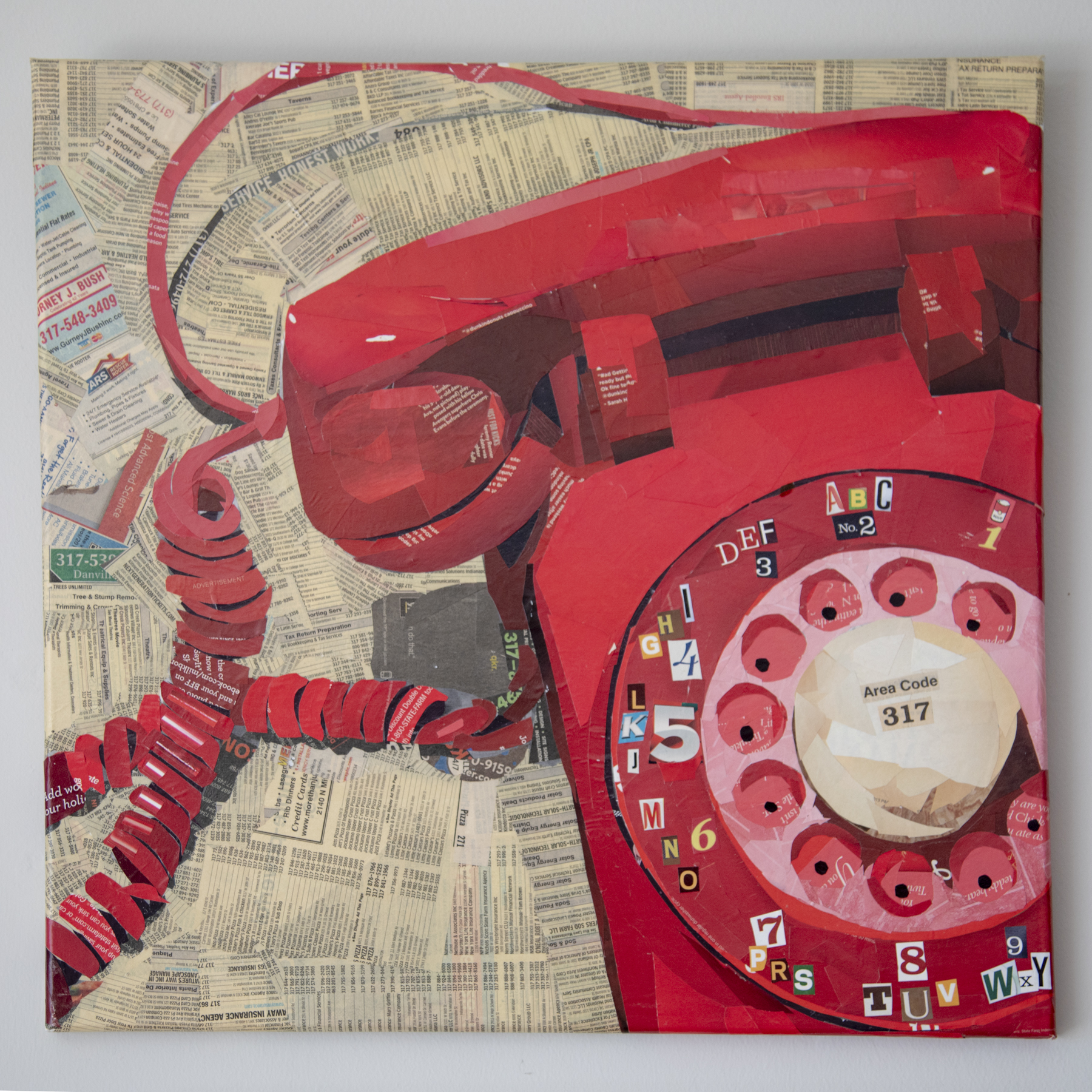
What advice would you give to aspiring designers like yourself?
My biggest piece of advice is that you just have to jump in. You can’t compare yourself to anybody else. You can’t compare your skill level to anybody else. There are people out there doing way crazier things than I do—but they’re not me, and they’re not you. You just have to be yourself and that’s what will draw people to you.
What is one thing that the creative/design community can do in Indianapolis to help grow an audience for custom or handcrafted work?
I wish I knew the answer to that. I think Indianapolis is doing such a great job. I don’t know how I could do what I do if I didn’t live in a city. I grew up in a rural area where there was nothing, so I think Indianapolis does a magnificent job of creating a community for artists.
Do you have a dream commission or client?
No, I don’t have a dream commission. I try to take every commission and make it special because it’s important to the customer. It’s not about me. It’s my perspective on a piece of art, but my art is something that’s going to be with them for a long time—a lot longer than it was with me. I just want people to be happy with the pieces of art they get from me.

What makes your work different from anyone else’s?
I can teach people how to paint. I can teach them to make a certain piece just like mine. But it won’t be just like mine, because everybody is individual. Just because I teach you to do what I do, it doesn’t mean you’re going to do it the same as me. People always ask, “Aren’t you afraid of sharing your secrets or sharing your process?” And the answer is no, because at the end of the day, you will not take it in the same direction that I do. That’s why there are so many artists and it’s how we can all exist at the same time.
What’s your most rewarding memory in your business?
Recently, I was asked to do a piece of someone that had passed. I knew the person who commissioned me; we went to college together. I hadn’t seen him in 30-some years, so to be able to present that to his daughter and his grandkids—it was really special.

